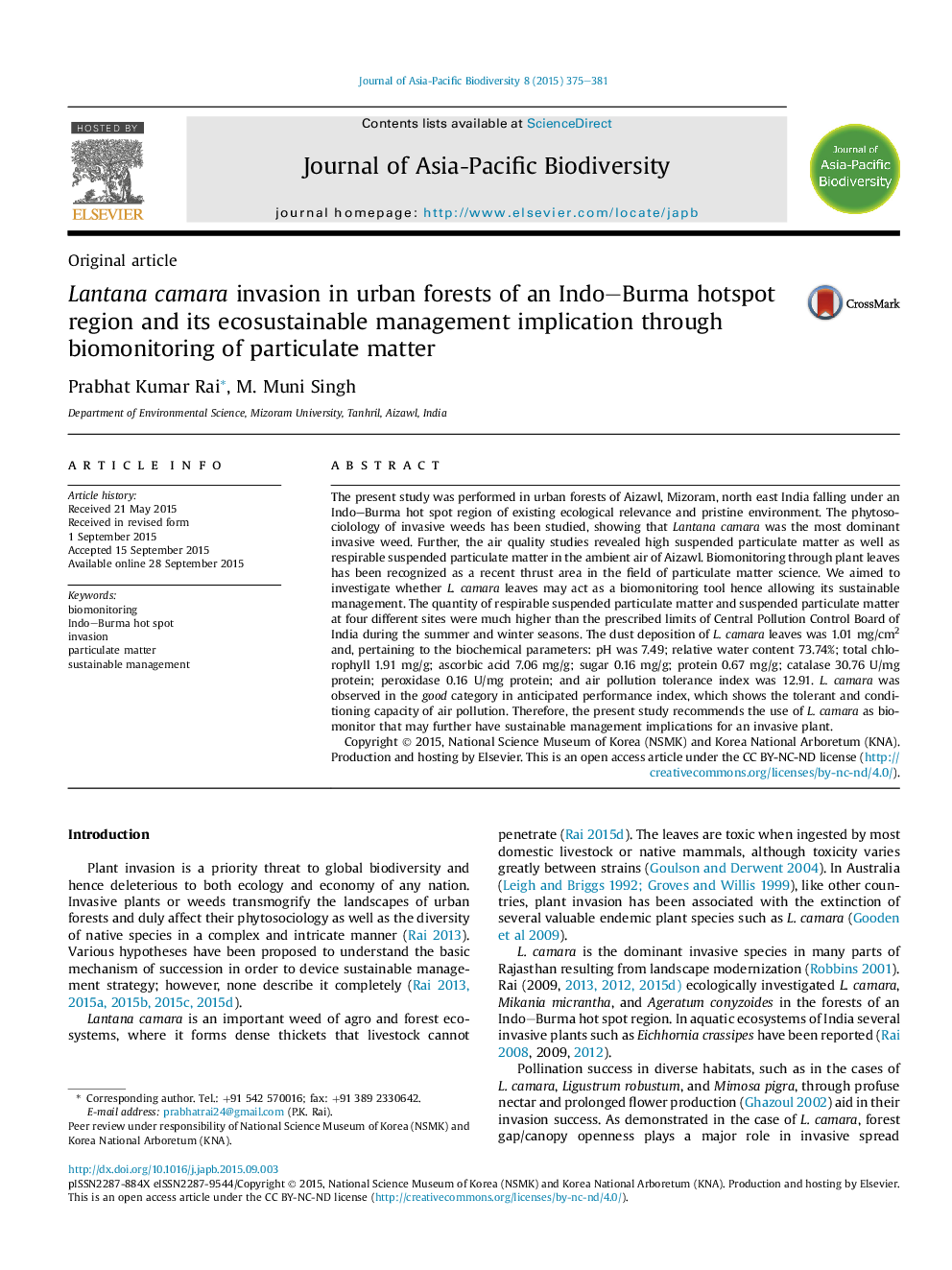| Article ID | Journal | Published Year | Pages | File Type |
|---|---|---|---|---|
| 4395027 | Journal of Asia-Pacific Biodiversity | 2015 | 7 Pages |
Abstract
The present study was performed in urban forests of Aizawl, Mizoram, north east India falling under an Indo-Burma hot spot region of existing ecological relevance and pristine environment. The phytosociolology of invasive weeds has been studied, showing that Lantana camara was the most dominant invasive weed. Further, the air quality studies revealed high suspended particulate matter as well as respirable suspended particulate matter in the ambient air of Aizawl. Biomonitoring through plant leaves has been recognized as a recent thrust area in the field of particulate matter science. We aimed to investigate whether L. camara leaves may act as a biomonitoring tool hence allowing its sustainable management. The quantity of respirable suspended particulate matter and suspended particulate matter at four different sites were much higher than the prescribed limits of Central Pollution Control Board of India during the summer and winter seasons. The dust deposition of L. camara leaves was 1.01 mg/cm2 and, pertaining to the biochemical parameters: pH was 7.49; relative water content 73.74%; total chlorophyll 1.91 mg/g; ascorbic acid 7.06 mg/g; sugar 0.16 mg/g; protein 0.67 mg/g; catalase 30.76 U/mg protein; peroxidase 0.16 U/mg protein; and air pollution tolerance index was 12.91. L. camara was observed in the good category in anticipated performance index, which shows the tolerant and conditioning capacity of air pollution. Therefore, the present study recommends the use of L. camara as biomonitor that may further have sustainable management implications for an invasive plant.
Related Topics
Life Sciences
Agricultural and Biological Sciences
Ecology, Evolution, Behavior and Systematics
Authors
Prabhat Kumar Rai, M. Muni Singh,
